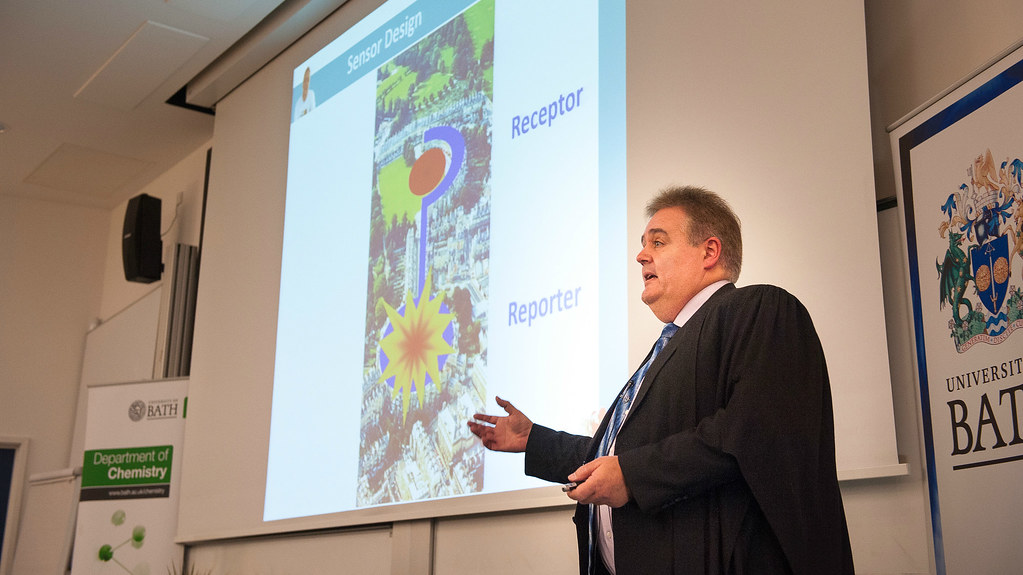When the body is in shock, such as in seriously ill patients recovering in intensive care units, it releases large amounts of glucose into the bloodstream which can slow the patient’s recovery. Patients are often given insulin to lower glucose levels but this needs to be monitored closely to avoid dangerous hypoglycaemia (when levels are too low) which can cause seizures and coma.
The team at Bath, led by Professor Tony James, has helped GlySure Ltd develop a system using boronic acids that can be used in continuous glucose sensors for intensive care patients.
Now the team, including Yun-Bao Jiang from Xiamen and John Fossey from Birmingham Universities, have devised a much simpler system that works by a different mechanism and could be used to selectively detect glucose in the blood. They believe it could lead to a lower cost and calibration free system for continuously monitoring blood glucose levels.
Their work was recently published in the Journal of the American Chemical Society and chosen as a Spotlight article.
Leading the research, Professor Tony James explained: “Like our previous system, this technique is based on boronic acids but works in a different way to current sensors. It uses the aggregation of fluorescent molecules to produce a fluorescent signal when it binds to glucose but not for fructose, so for the first time we’re able to detect glucose without interference from fructose.
“This new system has improved selectivity, specificity, is calibration free and is much simpler, and therefore less expensive to make.”
The researchers are now looking for potential commercial partners to develop the technology further into sensors that can be used for the benefit of both diabetic and intensive care patients.
The collaboration has just been supported by a Royal Society International Exchanges NSFC cost share grant which will enable exchanges between Bath and Xiamen University for the next two years.

